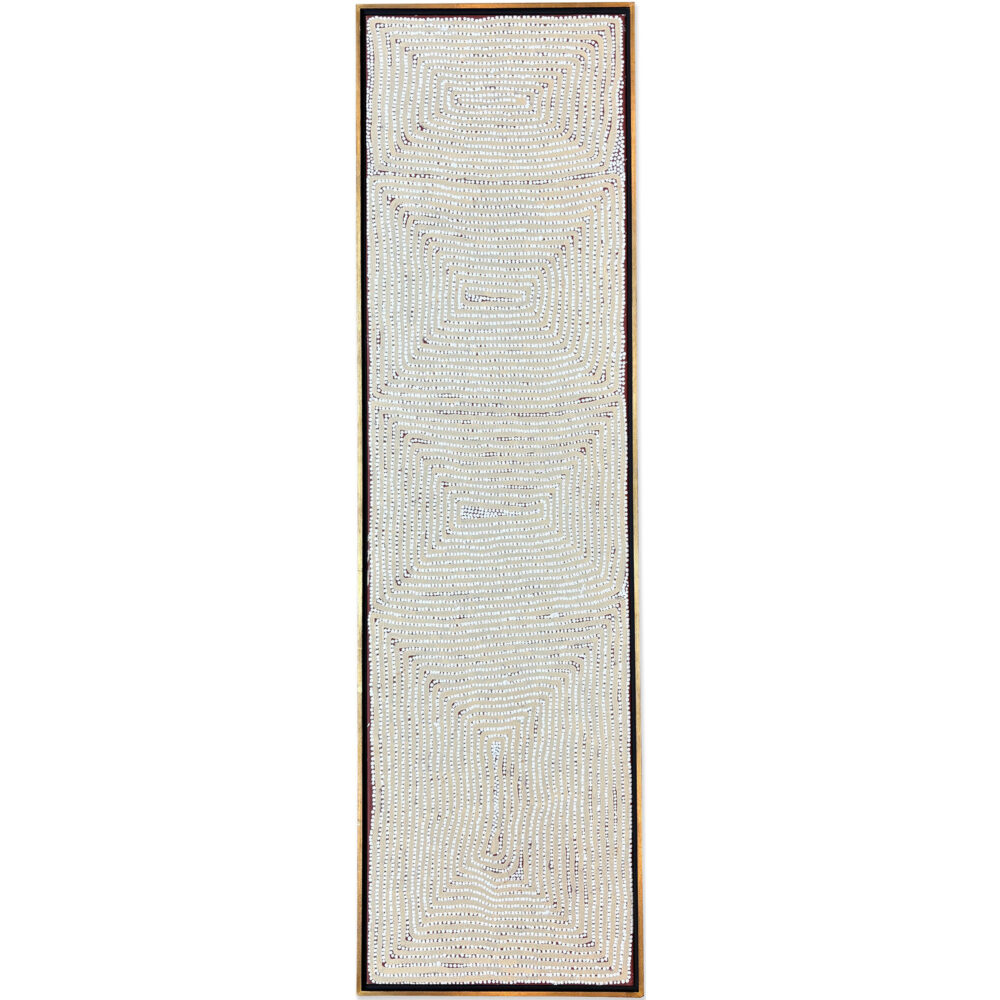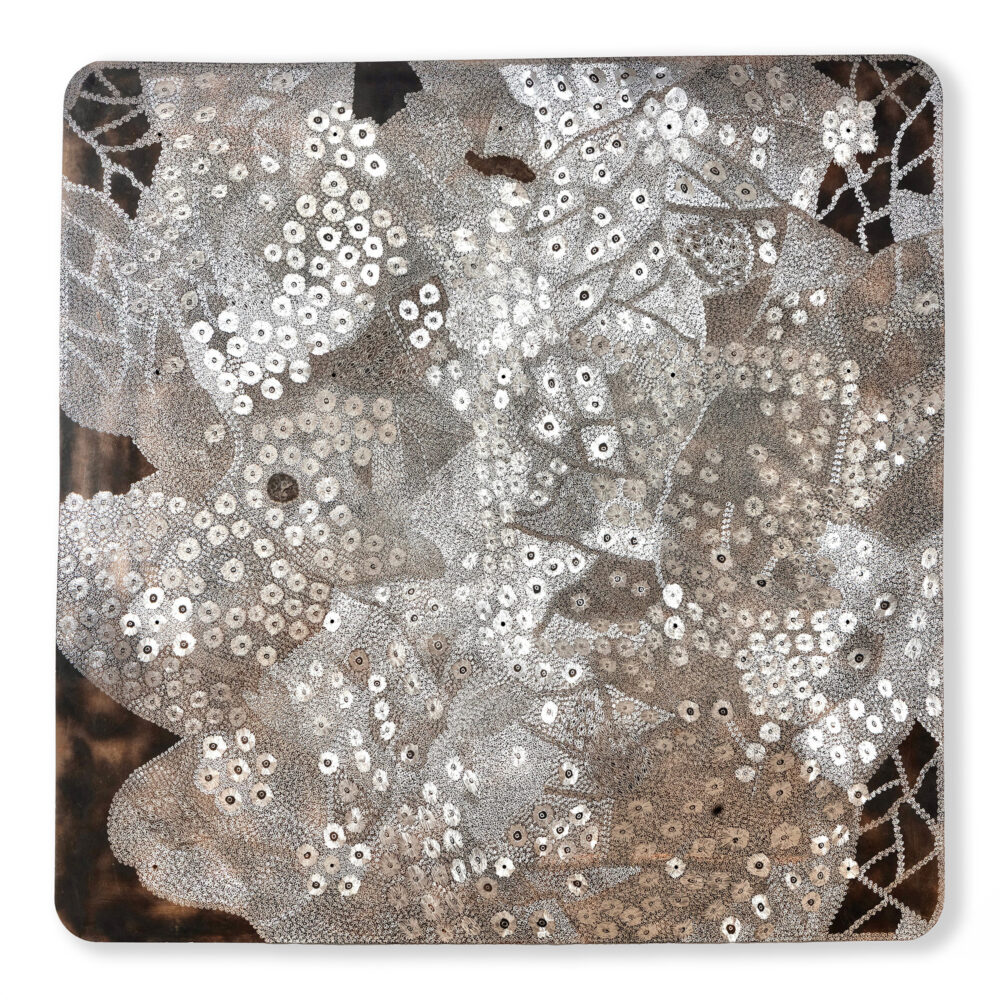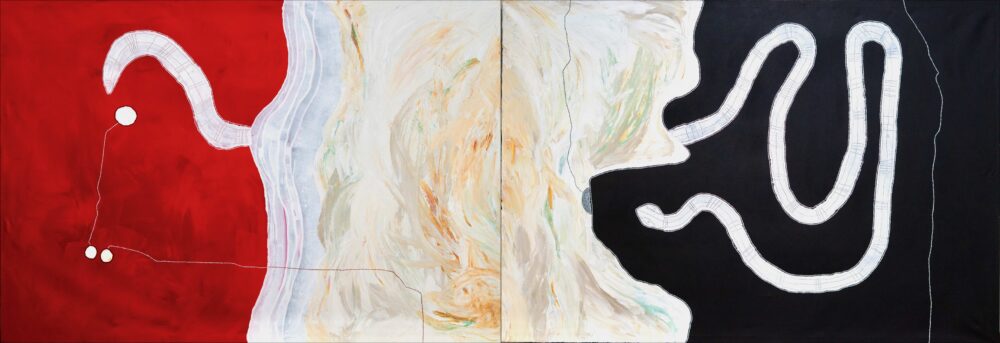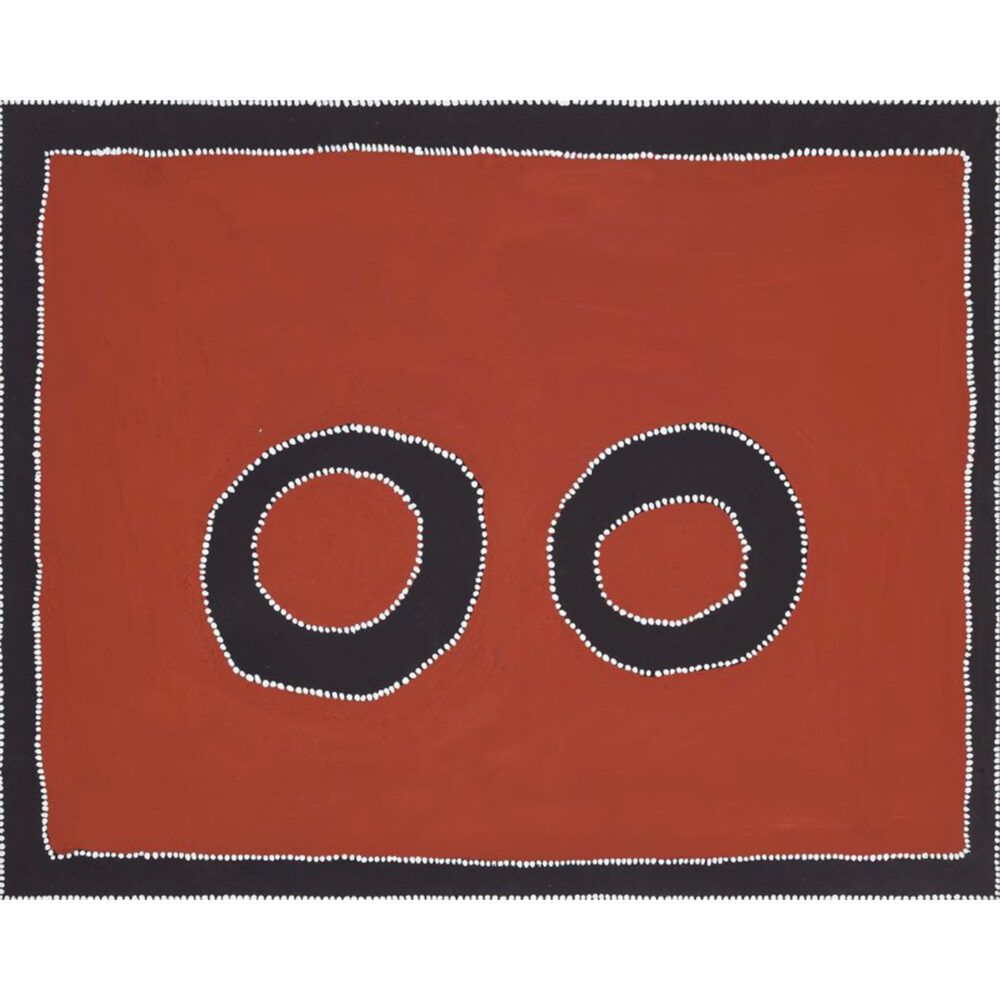

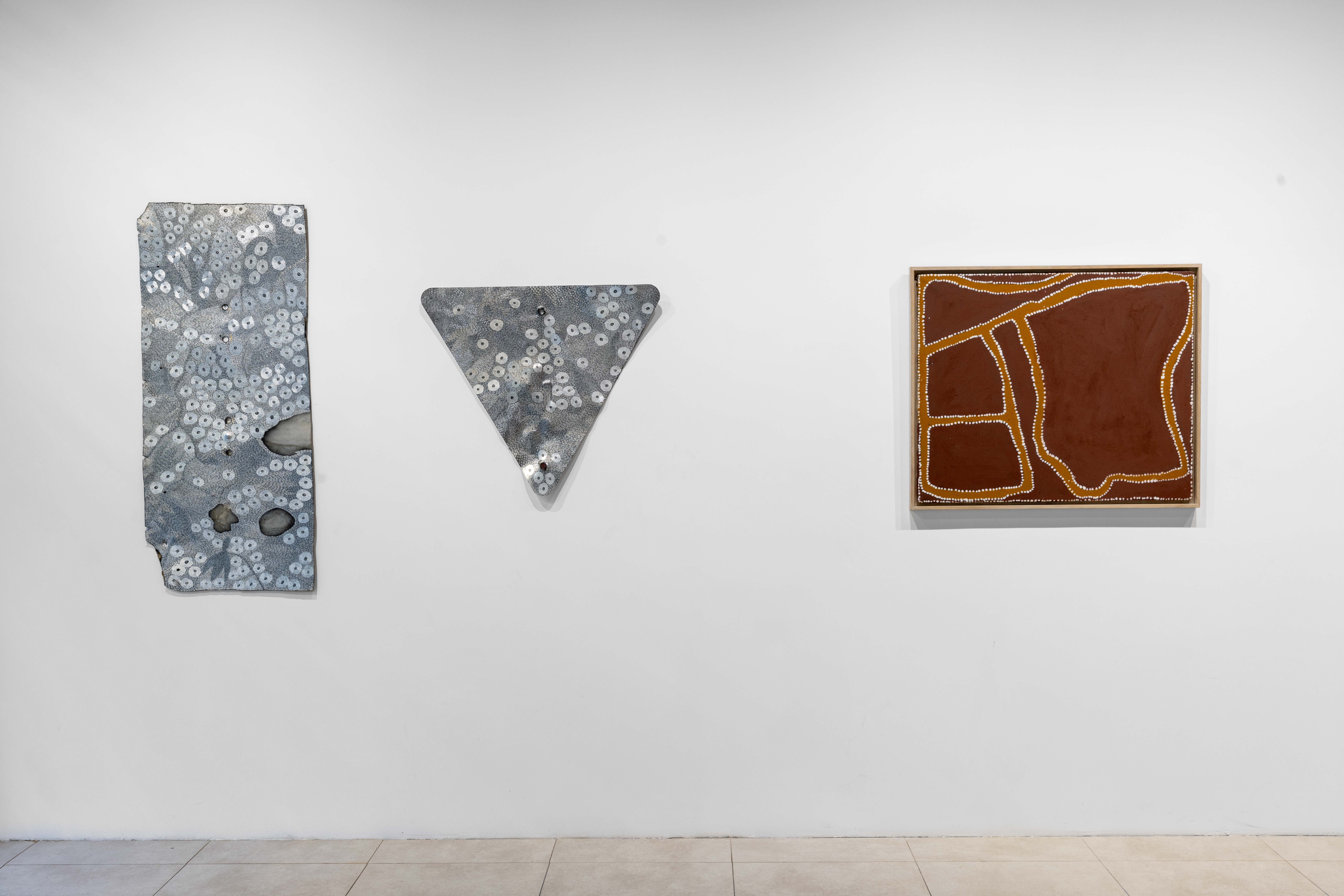
Rover Thomas (Joolama), born around 1926 near Well 33 on the Canning Stock Route in Western Australia’s Great Sandy Desert, had a deeply rooted connection to his heritage. Raised within the traditions of the Wangkajunga and Kukatja peoples, he embraced the nomadic bush life, learning hunting and gathering alongside his family in the Western Desert. At age 11, Thomas ventured with drover Wally Dowling to Bililuna, then later to Bow River and Texas Downs, refining his skills in droving and fencing. Embraced by the Kija people, he underwent tribal initiation, receiving the skin name Joolama, cementing his belonging to the East Kimberley region, far from his birthplace.
While his artistic journey commenced relatively late in life, influenced by figures such as Paddy Jaminji, Thomas’s creative spirit ignited. His early works, crafted on boards for the Kurirr Kurirr ceremony following a dream about a deceased relative, marked the start of a brief but intensely prolific period. Thomas’s paintings transcended mere landscapes; they were spiritual and mythological narratives intertwined with the physicality of the land. Through art, he memorialised historical events such as the Bedford Downs Massacre and Cyclone Tracy’s destruction of Darwin, preserving cultural and social legacies passed down orally.
This good-sized, museum-quality painting, Bow River Country (1995), reflects on Rover’s greatly beloved early days as a young stockman, moving across his adopted country, the Kimberley, Western Australia. Using the entire canvas and working in traditional media, Thomas maps both topographically, personally and spiritually this significant 148-kilometre (92 mile) river.
Bow River Country, 1995
Kukaja / Wangkajunga people
PROVENANCE
Deutscher~Menzies, Fine Aboriginal Art and a Collection of New Ireland Malagan Sculptures,
Melbourne, 27/06/2000, Lot No. 347
Caruana & Reid Fine Art, Sydney
Private collection, Western Australia
EXHIBITED
Caruana & Reid Fine Art, Sydney, Important Aboriginal Art, November 2004
RELATED WORKS
A sister work, Bow River Country, 1995, is held in a private collection with Waringarri Arts catalogue number AP0439.
$60,000 USD
Rover Thomas (Joolama), born around 1926 near Well 33 on the Canning Stock Route in Western Australia’s Great Sandy Desert, had a deeply rooted connection to his heritage. Raised within the traditions of the Wangkajunga and Kukatja peoples, he embraced the nomadic bush life, learning hunting and gathering alongside his family in the Western Desert. At age 11, Thomas ventured with drover Wally Dowling to Bililuna, then later to Bow River and Texas Downs, refining his skills in droving and fencing. Embraced by the Kija people, he underwent tribal initiation, receiving the skin name Joolama, cementing his belonging to the East Kimberley region, far from his birthplace.
While his artistic journey commenced relatively late in life, influenced by figures such as Paddy Jaminji, Thomas’s creative spirit ignited. His early works, crafted on boards for the Kurirr Kurirr ceremony following a dream about a deceased relative, marked the start of a brief but intensely prolific period. Thomas’s paintings transcended mere landscapes; they were spiritual and mythological narratives intertwined with the physicality of the land. Through art, he memorialised historical events such as the Bedford Downs Massacre and Cyclone Tracy’s destruction of Darwin, preserving cultural and social legacies passed down orally.
This good-sized, museum-quality painting, Bow River Country (1995), reflects on Rover’s greatly beloved early days as a young stockman, moving across his adopted country, the Kimberley, Western Australia. Using the entire canvas and working in traditional media, Thomas maps both topographically, personally and spiritually this significant 148-kilometre (92 mile) river.


